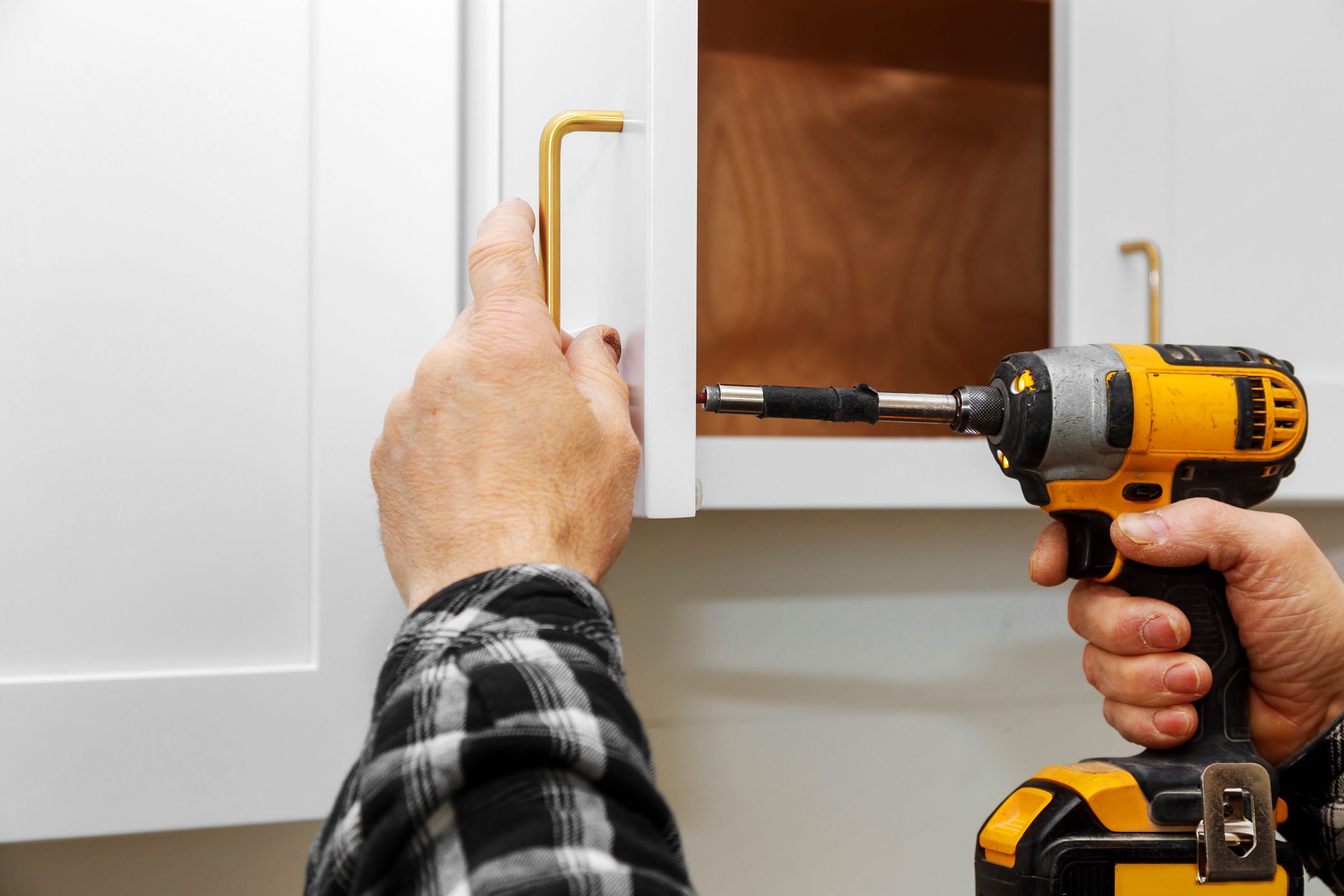Knobs, handles and pulls are like functional jewelry. When you know where to put knobs and handles on kitchen cabinets, you get style and convenience.

Where To Put Knobs and Handles on Kitchen Cabinets

Cabinet pulls, knobs and handles are central to the functionality of your kitchen cabinet doors and drawers. The hardware helps you open or close the door or drawer, even when your arms are full of dishes or your fingers coated with cake batter. (The pinkie-finger pull motion is one of my personal favorite cabinet moves.)
Lately, many interior designers began calling cabinet hardware “the jewelry of your home.” Where to place the hardware so it looks good and functions well can be a challenge, so here’s a helpful guide. You might also be interested in how to install cabinet hardware.
Types of Cabinet Hardware
First things first: Knowing the different types of cabinet hardware can help you narrow your choices. Evan Nelson, kitchen designer at Nelson Cabinetry, identifies the basic types of kitchen cabinet hardware.
Knobs
Kitchen cabinet knobs are typically small, round and easy to grip. Nelson says they can provide a minimal or modern look, but plenty of traditional kitchens also feature them.
Handles
These tend to feature broader profiles. Some handles have more elaborate designs, while others are minimalistic. “Their profile makes them better suited for some vintage or ornate decorative schemes,” Nelson says. If the handles have backplates or a fussy design, they also can be slightly clunky and cumbersome.
Pulls
These offer a mix between the streamlined look of knobs and the wider profile of handles. “They work well in many aesthetic settings but may not be optimal for smaller cabinets or tight spaces due to their more prominent size,” Nelson says.
- Classic bar pull: Features a handle attached to the cabinet horizontally, providing ample space for gripping and easy maneuvering of the door or drawer.
- Arch pull: Features a more dramatic curve. The arch makes it easy to grip.
- Ring pull: Simple circles in relatively small sizes with a sleek, modern look.
- Cup pull: Often crescent, shell or bell-shaped. You can hook your fingers under these to pull your door or drawer open. Nelson says cup pulls add vintage charm.
Where to Put Knobs, Handles and Pulls on Kitchen Cabinets
Putting your cabinet hardware in the right place is paramount. Correctly positioned hardware looks better and functions well. If placed incorrectly, hardware can be difficult to reach, or you might pinch a finger.
Cabinet doors
If your cabinet doors come with rails (horizontal pieces on top and bottom of the door) and stiles (vertical pieces on the sides), use the bottom door rail as a guide. Line up a knob with the top of the bottom door rail. If you’re installing door pulls, line up the bottom of the pull with the top of the bottom door rail. Always center them on the door stile.
Nelson says the most common placement for cabinet knobs is opposite the door hinges. “This helps provide balance and visual symmetry on doors of all sizes,” he says.
Also, placing knobs higher or lower on the door can help to visually break up a large expanse of flat panels. Placing them two-and-a-half to three inches from the bottom corner of the door can add visual interest and dimension to wall cabinets.
Cabinet drawers and pull-outs
For these, center knobs as much as possible. “This creates a sense of balance and harmony that is easier on the eye and also helps make them feel more accessible,” Nelson says.
The same goes for bar pulls and cup pulls. On cabinets, install your hardware vertically two-and-a-half to three inches from the corner of the door. For drawers, they should be installed horizontally, in the center.
Cabinet Knob Placement Tips
With these expert tips and tricks, you’re more likely to place that hardware correctly the first time.
- Use a cabinet jig: “This is used to accurately position and drill holes for cabinet hardware, such as knobs and pulls,” Nelson says. This jig features a flat base, which has markings or drilled holes to help guide placement of the drill bit. It also typically includes an adjustable slide or clamp mechanism, which allows you to precisely align the jig on your cabinet door or drawer front.
- Use a modified combination square: This helps you measure right angles and center objects like knobs and handles. You can even make one yourself.
- Use adhesive putty: Not sure if your hardware is going in the right spot? Affix the hardware temporarily with adhesive putty so you can step back and assess. Dap makes a reusable adhesive called Bluestik.
- Cover holes: If you’re only upgrading your hardware and not the cabinets themselves, you may have visible and unsightly holes. If you’re switching from a pull to a knob, or you’d prefer to select pulls with a different hole pattern, cover the old holes or hide damaged surfaces with backplates.
- Space them properly: Most drawer pulls are centered on the drawer fronts. But if the cabinet you’re working on has two or three drawers the same size and one larger one at the bottom, install the bottom knob (or pull) higher than the center of that drawer front. Install it so all the knobs on the cabinet are spaced evenly. This configuration is pleasing to the eye, and you don’t have to bend over as far to open the bottom drawer.




















